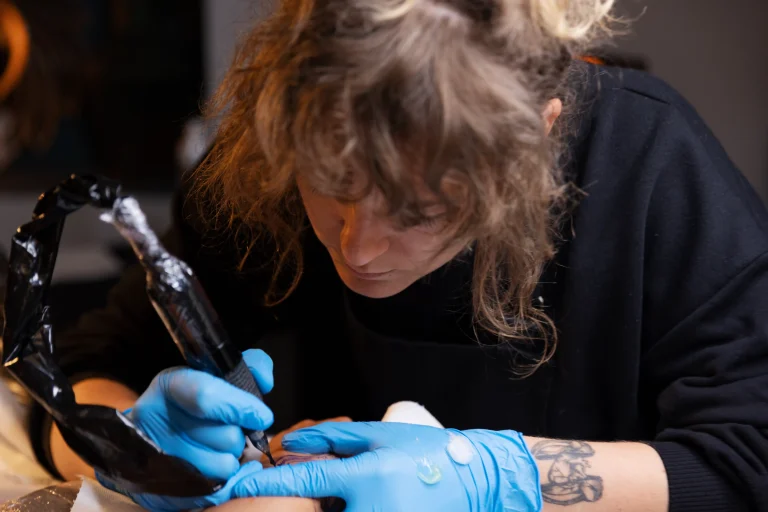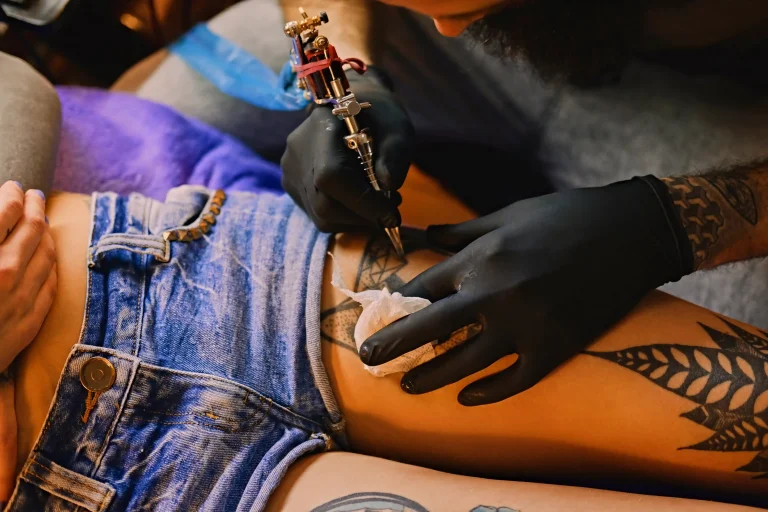Whether you’re an experienced tattoo artist or just starting your path, understanding the differences in setup, performance, and maintenance can transform your skill. Dive deeply into this investigation. It will help you identify the perfect device. That device should match your style precisely. Plus, it will enhance your tattooing experience significantly!
Overview of Tattoo Machines
Tattoo machines are the crucial devices that artists utilize to make intricate designs on the skin. Knowing the distinction among the different kinds of tattoo machines can make a considerable difference in the quality and performance of your work.
Types of Tattoo Machines
The two most popular tattoo machine types are coil and rotary. Each has its own special design, operation mechanism, and features, intended to serve various methods and styles of tattooing.
Importance of Choosing the Right Machine
Selecting the ideal tattoo machine matters in order to get the most out of your work. Your selection not only decides the final masterpiece but also the comfort and convenience of your working process. A well-matched device can sharpen your accuracy and pace while greatly reducing exhaustion.
Coil Tattoo Machine Setup
Coil tattoo machines are renowned for their classic look and have been part of the industry for ages. They function by utilizing electromagnetic coils that force the needle in the upward and downward motions.
Components of a Coil Tattoo Machine
- Frame:Supplies foundational support.
- Coils: Usually two electromagnetic coils that energize the device.
- Armature Bar: Links to needles and is moved by magnetic pull.
- Contact Screw:Modifies the flow of electric current.
- Spring:Delivers tension to guide armature motion.
Operating Mechanism of Coil Machines
Coil machines work via electromagnetic induction. When current surges through the coils, they magnetize swiftly, tugging the armature bar downward. This motion thrusts the needle into the skin. Then, as the circuit interrupts, a spring swiftly retracts the armature bar, pulling the needle back up.
Advantages of Coil Machines
- Exactness:Grants superior command over needle depth and velocity.
- Adaptability:Fits well for outlining and shading tasks.
- Adjustable:Features easily tweakable parts for tailored configurations.
Rotary Tattoo Machine Setup
Rotary tattoo machines present a contemporary option with a streamlined design compared to their coil counterparts. They rely on a motor-powered system to shift needles in a straight path.
Components of a Rotary Tattoo Machine
- Frame:Secures all elements in place.
- Motor:Fuels the needle’s motion.
- Cam Wheel:Transforms circular motion into straight-line action.
- Needle Bar:Connects directly to the cam wheel for steady movement.
Operating Mechanism of Rotary Machines
The rotary machine operates through an electric motor that spins a cam wheel rapidly. This spinning converts into linear action, driving the needle bar up and down smoothly. Consequently, the fluid motion ensures reliable performance with hardly any noise.
Advantages of Rotary Machines
- Silent Functioning: Emits far less sound than coil devices.
- Featherlight Build:Simpler to maneuver during prolonged sessions.
- Even Motion: Delivers uniform needle action, lessening skin irritation.
Key Differences Between Coil and Rotary Setups
Recognizing these contrasts empowers you to choose wisely based on your unique demands as an artist.
Performance Variations
Coil machines provide enhanced authority over power adjustments, making them perfect for intricate outlining or bold shading. On the other hand, rotary machines excel with their even running, ideal for dynamic color filling and harmonious blending due to their reliable needle rhythm.
Maintenance Requirements
Coil machines need ongoing maintenance, such as turning and replacing components such as springs or contact screws. Conversely, rotary machines, with fewer moving pieces, need less regular attention. However, they may occasionally require motor lubrication to stay in top shape.
User Experience
Operating coil machines can feel more taxing because of their heft and vibration intensity. In contrast, rotary machines offer ergonomic perks with their light construction and diminished shaking. As a result, they allow for lengthier sessions with reduced weariness.
Selecting the Right Machine for Your Needs
In deciding between rotary and coil tattoo machines, it’s necessary to take into account your own particular needs as an artist. Both have their own particular strengths, and both are better suited to differing working styles and personal preference.
- Artistic Flair:If you excel in meticulous line work or classic shading, a coil machine might match your goals due to its precision and power mastery. However, if you prioritize vivid color packing or smooth gradients, a rotary machine could suit you better.
- Comfort and Ergonomics:Reflect on how each machine’s weight and vibration affect your ease during extended work. Rotary machines, being lighter and less jarring, often prove advantageous for prolonged use.
- Maintenance Preferences:Consider how much effort you’re ready to invest in upkeep. Coil machines call for frequent tuning and care, whereas rotary machines require less constant effort, though they benefit from periodic motor oiling.
Yaba: A Dependable Supplier for Tattoo Machines
Selecting a genuine supplier of your tattoo equipment is as crucial as making the selection itself. In this regard, Yaba is one name that stands true to its reputation of delivering high-quality tattoo machines and accessories.
Why Choose Yaba?
- Quality Guarantee: Yaba delivers premium machines that adhere to industry benchmarks, ensuring dependabilityand longevity.
- Broad Range:They stock an extensive array of both coil and rotary machines, meeting diverse artistic demands and preferences.
- Customer Assistance: Yaba provides stellar support with expert staff eager to address any questions or issues about their offerings.
Final Thoughts
Deciding between coil and rotary tattoo machines hinges on your individual style, comfort threshold, and upkeep inclinations. Both types bring unique merits, rendering them apt for varied tattooing purposes. By grasping these disparities and evaluating aspects like functionality, care needs, and user comfort, you can confidently select a machine that amplifies your artistry as a tattooist.
FAQs About Tattoo Machines
Q: What is the chief distinction between coil and rotary tattoo machines?
A: The basic difference is in their operation systems. Coil machines make use of electromagnetic coils to push the needle up and down with controlled depth and speed. Rotary machines, on the other hand, use a motorized system with smooth and constant needle movement at low noise.
Q: Which type of tattoo machine is ideal for novices?
A: Newcomers might find rotary machines more approachable due to their featherlight build, hushed operation, and modest upkeep needs. Additionally, their even motion can minimize skin damage during learning phases.
Q: How frequently should tattoo machines be maintained?
A: Coil machines need routine servicing because of their intricate design with numerous moving parts. This involves tuning tweaks and replacing components as required. Rotary machines, however, demand less frequent checkups. Still, they should be inspected occasionally for motor lubrication to maintain peak performance.









